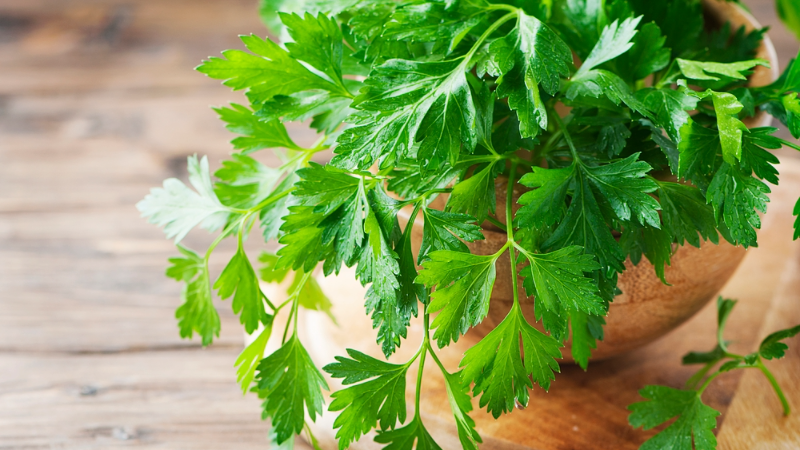
If you’ve only been using parsley as a garnish only, you’re missing out on some great health benefits! Parsley is a very popular herb that can be enjoyed in larger amounts, as a key ingredient, in main dishes like tabbouleh, pesto, smoothies, soups, and so much more.
Parsley’s top nutrient is vitamin K. Even if we just sprinkle one tablespoon of fresh parsley over our food, we will get over 50% of our Daily Value. This is a very easy way to increase our vitamin K intake naturally to support our bones, our heart and our overall blood health. Watch out for interactions with anticoagulants, though. A sudden increase in vitamin K intake while taking anticoagulant medication may lead to clot formation.
Other important nutrients in parsley include vitamin A, vitamin C, folate, and iron. This means that parsley can also support our immunity, our eyes, our metabolism, our brain, our babies’ early development, our muscles, and our red blood cells. Plus, parsley is also rich in phytochemicals lutein and zeaxanthin, known for protecting our eyes from blue light and macular degeneration due to aging.
When you shop for parsley, you can usually choose between curly parsley and Italian parsley (in this picture). When it comes to taste, chefs tend to favor Italian parsley due to its smoother texture and stronger flavor. However, you should try both and pick the one you like best since both have pretty much the same nutritional qualities. You can also use dried parsley to add flavor and a boost of vitamin K to your dishes, when fresh isn’t available.
Parsley Nutrition Calculator
Use our personalized nutrition calculator to discover the percentage of daily nutrition needs you and your family can get from eating parsley. The U.S. Department of Agriculture doesn’t differentiate between curly and Italian parsley since they are both very close in nutritional values.
Nutrition needs vary according to age, sex, and whether women of reproductive age are pregnant or breastfeeding. Fill out the form below for yourself and for your family members to get personalized results.*
* Calculated as a percentage of the Recommended Daily Allowances (RDAs) as established by the U.S. Department of Agriculture and the U.S. Department of Health and Human Services. Based on nutritional information provided by the U.S. Department of Agriculture as an average of multiple raw and dried parsley samples.
References
